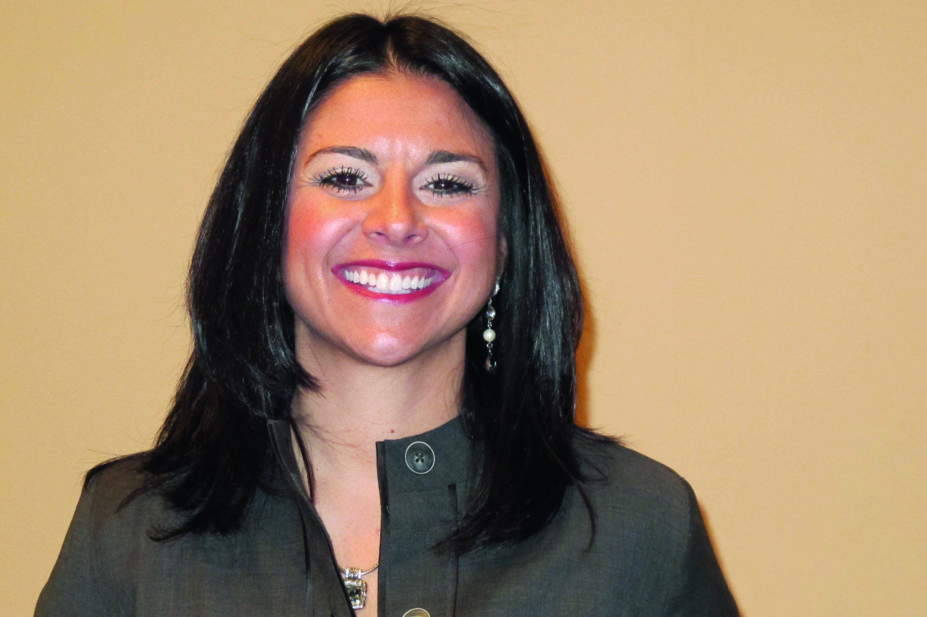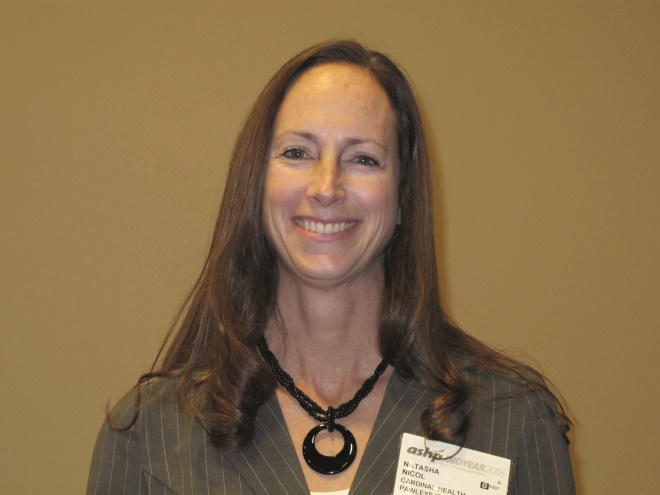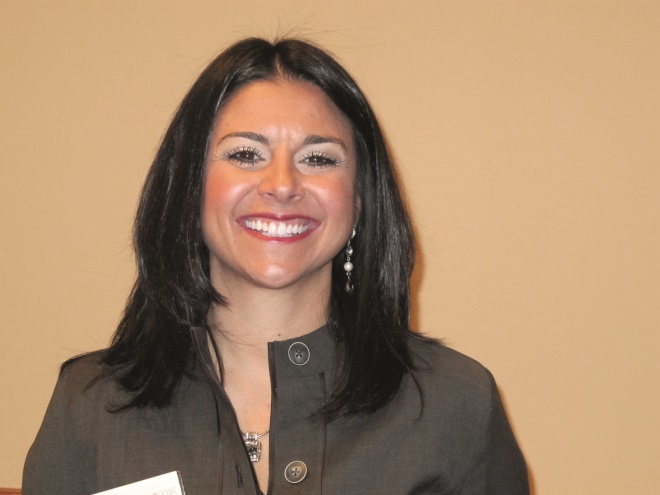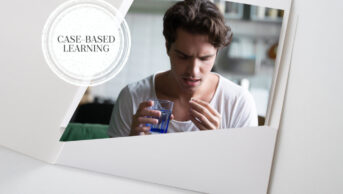
American Society of Health-System Pharmacists (ASHP)
When patients are harmed as a result of adverse drug events, the needs of healthcare professionals are often neglected making them ‘second victims’, participants attending the American Society of Health-System Pharmacists mid-year clinical meeting heard.
‘Second victims’ are healthcare professionals who suffer emotionally when the care they provide leads to patient harm. According to the Institute for Safe Medication Practices (ISMP), this can amount to a medical emergency for the healthcare professional, equivalent to post-traumatic stress disorder (PTSD), sometimes with far-reaching consequences.

Source: Christine Clark
Natasha Nicol, global medication safety officer at Cardinal Health, demanded changes at her hospital after she mistakenly issued a potassium chloride injection for a two-year-old child
Speaking at the meeting, held in Las Vegas, Nevada, in December 2016, Natasha Nicol, global medication safety officer at Cardinal Health, a healthcare services company based in Ohio, described how her own experience in a busy, understaffed hospital pharmacy had changed the course of her career.
A potassium chloride injection that she had issued for a two-year-old child caused a fatal cardiac arrest. Initially bewildered, Nicol said she soon decided that her options were either to leave pharmacy altogether or to instigate changes to ensure that a similar incident could not happen again. As the hospital’s chief pharmacist, she demanded that the hospital board provide the best automation for the pharmacy, along with facilities to segregate paediatric and adult pharmacy services and appoint specialist paediatric pharmacists. As a result, the hospital’s performance improved progressively and in July 2010 it was honoured with the American Hospital Association-McKesson Quest for Quality Prize, awarded annually to only one hospital in the United States.
Kara Berasi, assistant director, ambulatory pharmacy services, at the University of Florida Health Shands Hospital, described previous work by Susan Scott of the University of Missouri Health Centre, which showed that three steps are critical in caring for second victims: first, removal of the individual from the situation; second, provision of formal support, ideally at department level; and third, easy access to trained counsellors. Scott had found that the most common source of support was colleagues and peers and described a six-phase recovery trajectory for second victims (see ‘Second victim recovery trajectory’). Scott had also developed a three-tiered support scheme in which all staff were ‘Tier-1 supporters’, trained to identify and react to the signs of distress in a colleague.

Source: Christine Clark
Jenna Merandi, medication safety coordinator at the Nationwide Children’s Hospital in Ohio, said that around 30% of second victims experience personal problems and 13% contemplate leaving their jobs or leaving their profession
Around 30% of second victims experience personal problems and 13% contemplate leaving their jobs or leaving their profession altogether, according to Jenna Merandi, medication safety coordinator at the Nationwide Children’s Hospital in Ohio. In July 2013, the hospital embarked on the development of a multidisciplinary programme to support second victims — the ‘You matter’ programme. Four-hour training sessions for peer supporters, including teaching of basic peer-support skills by clinical psychologists have been set up. Training sessions always start with participants describing their own experiences of incidents. “Some people have shared things that they have not talked about for 20 years,” Merandi disclosed. Trained peer supporters wear a distinctive (green) ‘You matter’ badge and a secure communication system has been established to enable staff to access the programme. More than 500 peer supporters have now been trained and more than 400 encounter forms have been completed, the bulk coming from the emergency room and intensive care unit. One unexpected finding was that interpreters were often affected; one had explained that it could be extremely distressing to translate and deliver bad news to a patient or relative and then to have to communicate the patient’s response back to the healthcare professional.
James Hoffman, chief patient safety officer at St. Jude Children’s Research Hospital in Memphis, Tennessee, concluded that awareness of the phenomenon of second victimhood and a non-punitive culture were important ingredients for setting up support programmes for second victims.
| Second victim recovery trajectory | |
|---|---|
Stage | Features — second victim response |
Stage 1 | |
Stage 2 | |
Stage 3 | |
| |
Stage 4 | |
Stage 5 | |
Stage 6 | Thrivers – learn, rationalise and go on to be patient safety champions and help future victims. Survivors – still troubled by thoughts of the event; affected by PTSD-style triggers. Dropping out – unable to overcome intrusive thoughts, feelings of inadequacy. |


